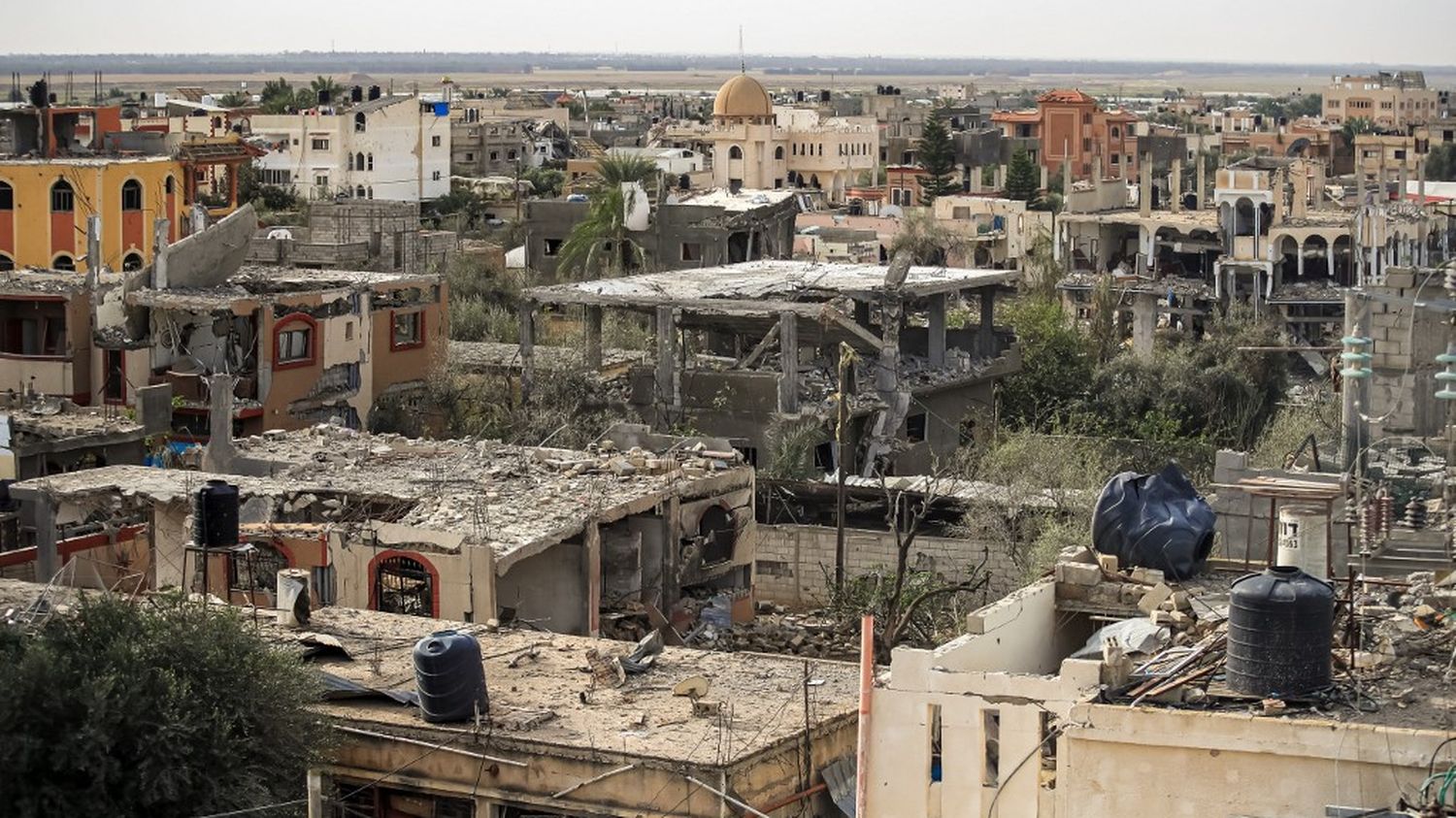In the north of the Palestinian enclave, 35% of arable areas have been destroyed, according to the United Nations satellite center.
Published
Reading time: 5 min

Concern continues to mount over food security in the Gaza Strip. Recent satellite images have shown the damage caused by the Israeli army’s ground operation on orchards and greenhouses located in the north and east of the enclave. It is there, far from the urban areas concentrated along the sea, that most of the 185 km2 of agricultural land is located. “L’Israeli army said in recent weeks it carried out military operations in the Beit Hanoun area, including in an undisclosed agricultural area, to clear tunnels and other military targets“, confirmed the international organization Human Rights Watch on the social network (ex-Twitter), Monday December 4.
Same observation in the North-West, near the village of As-Siafa, located on the border with the Jewish state. Bulldozers dug new roads there, opening the way for Israeli military vehicles, destroying part of the livelihoods of Gazans in the process. A deliberate strategy, analyzes Taher Labadi, researcher at the French Institute of the Middle East, stationed in Jerusalem. “Even if it is difficult to know the intentions of the Israeli army, we can establish that there was an explicit desire on its part to attack the economic resources of the Gaza Strip”he explains to franceinfo.
This is not the first time that the army has degraded agricultural land for no apparent reason. A report from the Fact-Finding Mission (PDF document) of the United Nations on the Gaza conflict relating to Israeli military operations carried out in the enclave from December 27, 2008 to January 18, 2009 had already pointed out these practices. “Armored bulldozers of the Israeli armed forces systematically razed the chicken coops, killing the 31,000 poultry there, and destroyed the buildings and equipment necessary for the operation of the farm. The Mission concludes that this was of a deliberate act of arbitrary destruction which was not justified by any military necessity”details the report.
From subsistence agriculture to resistance agriculture
Why target such facilities? “These practices increase the pressure on the population and, by extension, on Hamas”, deciphers Taher Labadi. As such, the NGO Oxfam denounced on October 26 the use of famine as a weapon of war on the Gazan population.
But another, more political reason exists. Part of Gaza’s agricultural sector has developed in self-sufficiency, to depend as little as possible on Israel. ” From 2006 and 2007, Hamas explicitly promoted in its programs “resistant agriculture directly intended for the Gazan people, which promotes crops that require little water and space”, recalls the researcher. The aim was to minimize the use of imported fertilizers and replacement equipment for agricultural machinery by developing more organic and sustainable agriculture.
A practice that completely breaks with that put in place during the Israeli occupation of the territory. At the time, agricultural policy focused on specialization in certain products, such as cherry tomatoes, strawberries and flowers, all intended for export. “Agriculture represents only 8.5% of the GDP of the Gaza Strip, but in reality, there is an entire economy that we cannot formalize and quantify. This is why we are talking about local subsistence agriculture, because it does not generate much income or formal employment, even though both exist”explains Taher Labadi. “For an economy to generate income, market exchanges and accounting are necessary. This was the agriculture advocated by Israel when it was in control.”
Around 15% of arable land significantly degraded
Space being limited and the population density extremely high, it was necessary to come up with ingenious ideas to feed the 1.9 million inhabitants. Especially since access to approximately 35% of Gaza’s arable land and 85% of maritime fishing zones remains restricted by the “buffer zone” set up by Israel.
Land previously used for growing strawberries and cherry tomatoes was therefore reused to plant fruits and vegetables with low water demand. Olive trees, date palms and palm trees have thus grown en masse, “because they consume little water and are okay with salty water”, adds Taher Labadi. Agronomists have developed layered cultivation techniques to save space on the ground. Finally, the use of hydroponics has made it possible to transform roofs and balconies into real vegetable gardens. “The only sectors still entirely dependent on imports are red meat and seeds (wheat, rice), because this requires too much space”explains the researcher.
In a report (PDF document) established from satellite images dating from 2021, the Food and Agriculture Organization of the United Nations managed to determine the distribution of different types of crops in the Palestinian enclave. According to this study, 32.32% of the Gaza Strip would be covered by orchards mainly producing citrus fruits, lemon, dates, olives and almonds, 5.97% by irrigated crops (strawberries, tomatoes, carrots). , cucumbers, etc.) and 5.18% by so-called rainfed agricultural areas, that is to say which follow the cycle of annual precipitation.
Since October 7, the surface area of this agricultural land has continued to decrease. The United Nations satellite center states on its website thatAround 15% of the Gaza Strip’s arable land showed a significant decline in health and density in November 2023 compared to the average of the previous six years. This destruction is more present in the North, where 35% of the land has been affected.
